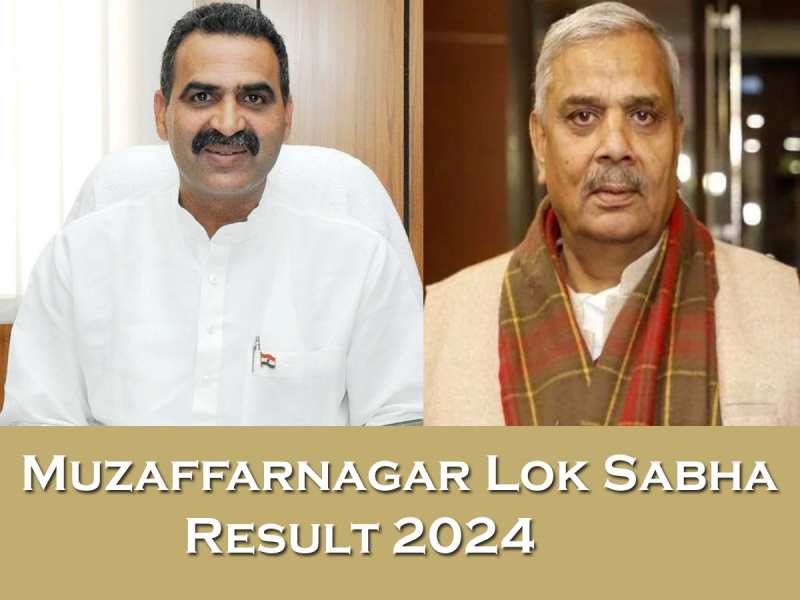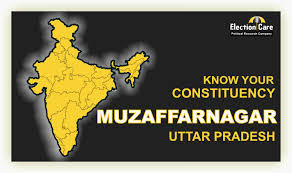Muzaffarnagar Lok Sabha constituency, located in the northern part of Uttar Pradesh, is one of the most significant political areas in India. Known for its diverse voter base and competitive elections, Muzaffarnagar holds a vital place in the national political scenario. In this article, we will explore its historical importance, the demographics of the region, key elections, and the present political environment in Muzaffarnagar.
Understanding Muzaffarnagar Lok Sabha Constituency
Muzaffarnagar is part of Uttar Pradesh’s electoral landscape, a state crucial to India’s political destiny. The constituency is made up of several assembly segments, which include Muzaffarnagar, Shamli, and other adjacent regions. This broad and diverse region reflects a mixture of urban and rural demographics, making the electoral battles here interesting and unpredictable.
Muzaffarnagar has a historical background that has shaped its current political environment. The area has been a witness to various social movements and political shifts, affecting the way the electorate views various national and state-level issues.
Political Significance of Muzaffarnagar
The Muzaffarnagar Lok Sabha constituency holds immense political importance due to its strategic location and large number of voters. It plays a key role in Uttar Pradesh’s overall voting trends. The state itself is known for having a massive impact on national politics, and Muzaffarnagar is no exception.
In recent years, political parties have focused heavily on the constituency during elections. The mix of communities, including farmers, urban professionals, and rural populations, influences political parties’ strategies. The significance of Muzaffarnagar is further amplified by the fact that it has historically been a swing state, with no single party consistently dominating.
Key Elections in Muzaffarnagar
The 2014 general elections brought Muzaffarnagar into the national spotlight when the BJP’s candidate, Sanjeev Balyan, won the seat. This victory marked a shift in the region’s political environment, as the region had historically been dominated by other political parties. The success of BJP in this constituency was seen as part of the broader wave of support that swept Uttar Pradesh during that election.
In 2019, Muzaffarnagar continued to be a competitive battleground. The 2019 Lok Sabha elections saw Sanjeev Balyan of the BJP retain the seat, further consolidating the party’s presence in the region. The election results reflected the changing political dynamics, with a strong emphasis on issues like national security, farmers’ welfare, and urban development.
The Demographics of Muzaffarnagar
The demographic composition of Muzaffarnagar is diverse, with various communities coexisting in the region. This diversity plays a major role in the electoral outcomes, as different groups prioritize different issues. In terms of caste and community, there is a mix of Jats, Muslims, and other groups. Understanding these demographics is crucial for political parties, as it allows them to tailor their campaigns to specific voter concerns.
Farmers in the region are often concerned with issues related to agricultural policies, while urban voters are more focused on development and security. The balance between these groups often decides the fate of political candidates in the region.
Current Political Scenario in Muzaffarnagar
In the present political landscape, Muzaffarnagar remains a hotly contested region. The influence of the Bharatiya Janata Party (BJP) in the area is undeniable, but opposition parties such as the Samajwadi Party (SP) and the Indian National Congress (INC) continue to maintain a presence.
The current Member of Parliament (MP) from Muzaffarnagar, Sanjeev Balyan, represents the BJP. His performance in office has been scrutinized by local leaders and the public. While some praise his efforts in agricultural reforms, others believe there is still a lot to be done in terms of local infrastructure and employment.
Opposition parties, on the other hand, often highlight issues like unemployment, inflation, and the welfare of farmers as the major factors influencing the region’s political discourse. They have tried to build a narrative that appeals to the rural and working-class segments of the population.
Challenges and Opportunities for Future Elections
Looking ahead, the Muzaffarnagar Lok Sabha constituency is likely to see many challenges. The voters are increasingly becoming more aware of the national and local issues that affect them. With the changing socio-economic environment, future elections may see a shift in voter preferences.
One of the biggest challenges for political parties will be addressing the concerns of the rural and agricultural sectors. With farmers playing a key role in the region’s economy, issues such as crop prices, agricultural subsidies, and land rights will be crucial. Additionally, urban development, infrastructure, and employment generation will be key areas of focus.
Conclusion
Muzaffarnagar Lok Sabha constituency continues to be an important area in the political landscape of Uttar Pradesh and India as a whole. Its historical significance, changing demographics, and competitive elections make it a focal point for political campaigns. Political parties will need to address the concerns of both urban and rural voters to succeed in the upcoming elections. The region’s evolving political environment offers both challenges and opportunities for future leadership.
FAQs About Muzaffarnagar Lok Sabha
- What is the significance of Muzaffarnagar Lok Sabha constituency?
- The constituency is a key player in Uttar Pradesh’s electoral trends and impacts national politics.
- Who is the current MP of Muzaffarnagar?
- The current Member of Parliament from Muzaffarnagar is Sanjeev Balyan of the Bharatiya Janata Party (BJP).
- Which political parties are active in Muzaffarnagar?
- The BJP, Samajwadi Party (SP), and Indian National Congress (INC) are active in the constituency.
- What are the key issues in Muzaffarnagar?
- Issues such as agricultural reforms, farmers’ welfare, unemployment, and urban development are key concerns in the region.
- When did Muzaffarnagar become a significant constituency in the elections?
- The constituency gained national attention in the 2014 and 2019 general elections, with the BJP’s rise in the region.




